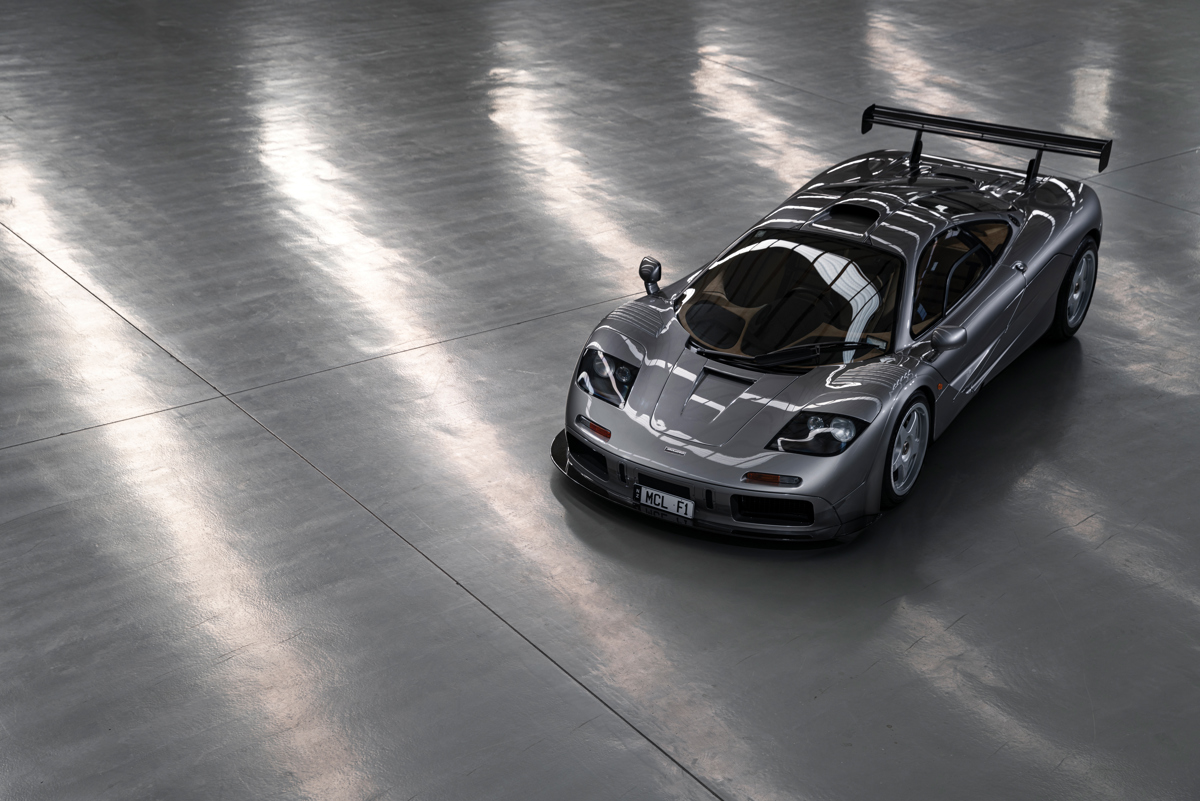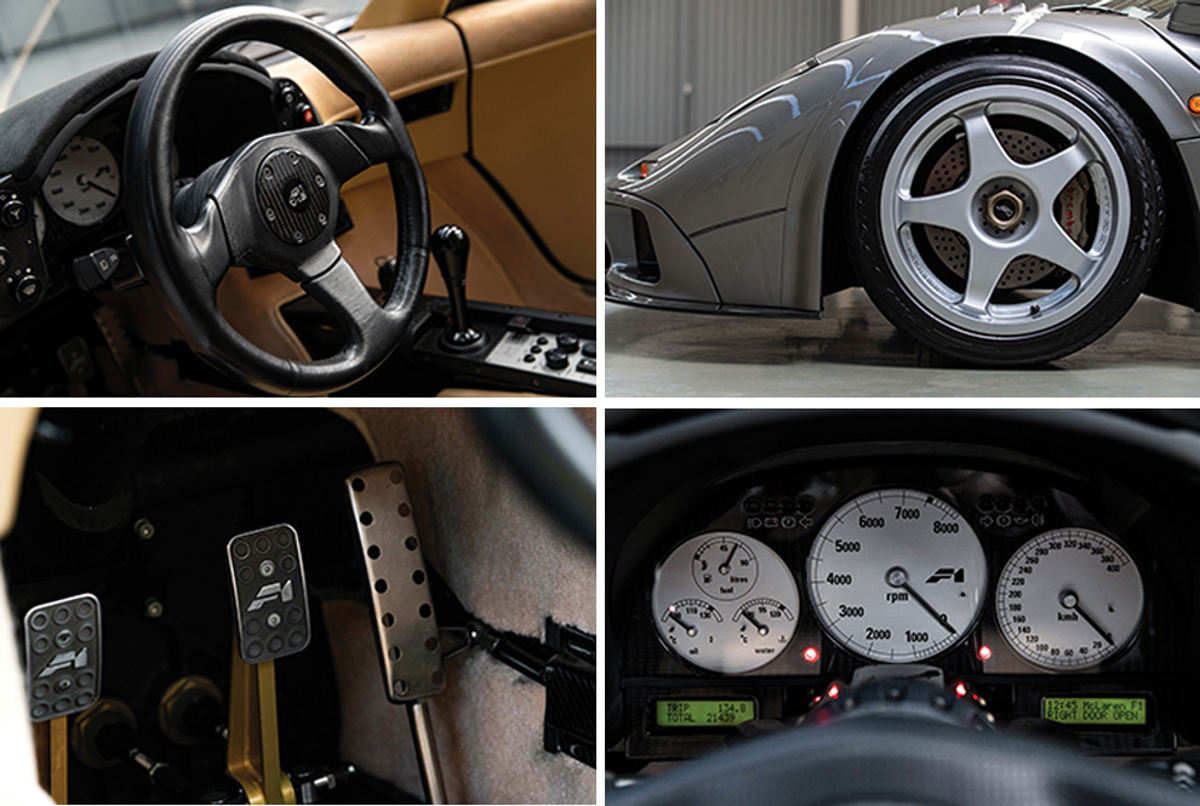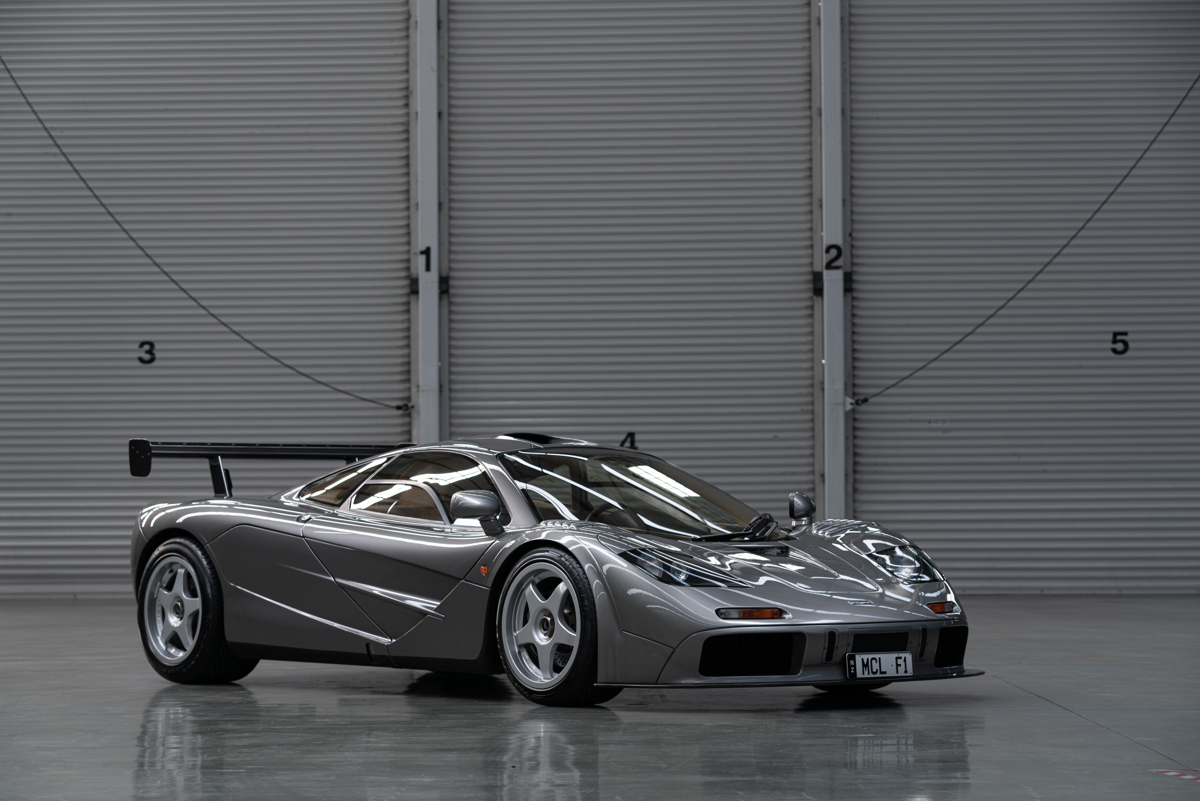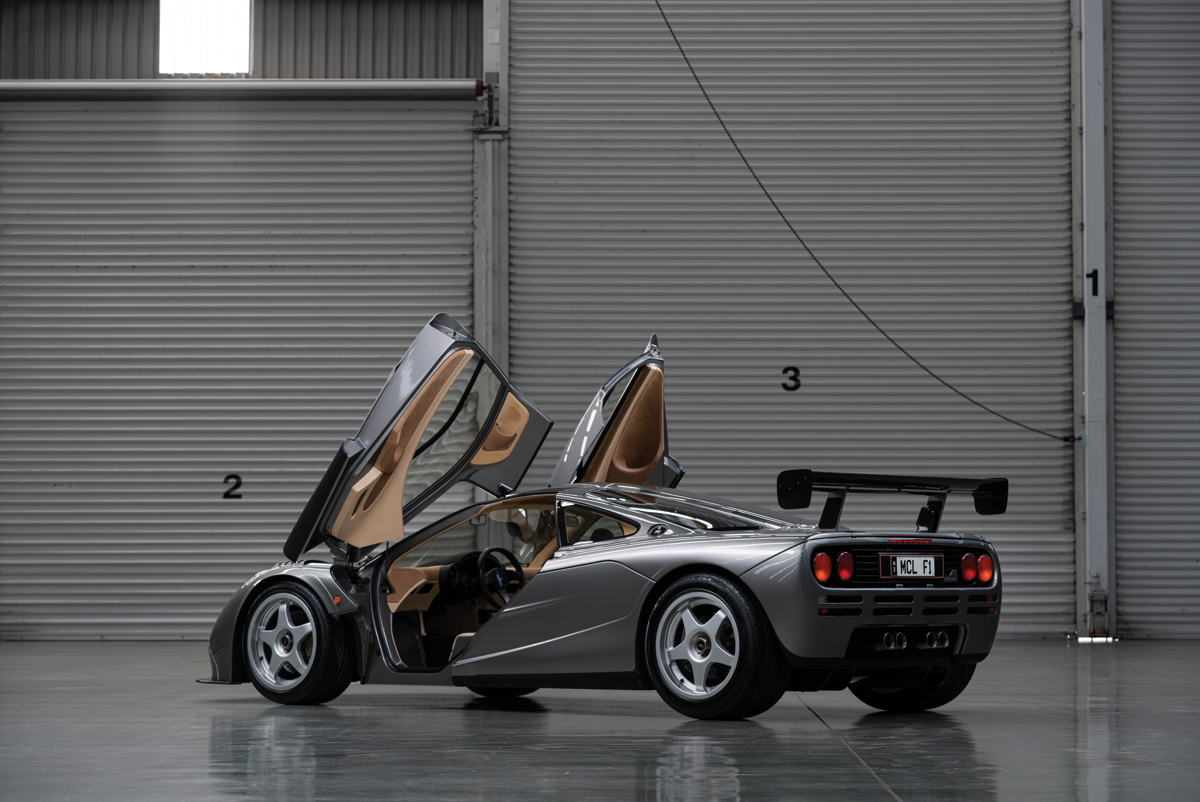It was a discussion between four McLaren executives while waiting for their flight from Milan that would ultimately lead to the creation of the McLaren F1 road car. The four stood waiting to board after the 1988 Italian Grand Prix discussing the future of the company when they made the decision to create the finest road-going sports car in the world, one which would arguably go on to be the finest sports car the world would ever see—period.
1994 McLaren F1 'LM-Specification'
Estimate: $21,000,000 - $23,000,000 USD
McLaren had dominated the competition throughout the 1988 Formula 1 season with their carbon fiber chassis MP4/4 race car with Ayrton Senna and Alain Prost at the wheel, winning 15 out of 16 races and setting a completely new standard on the track. It was in this same spirit that the McLaren F1 road car would be constructed—without compromise, rich with Formula 1 technology, and poised to completely redefine the sports car world. McLaren hand-picked the engineers to be assigned to the project and thoroughly analyzed every aspect of the proposed supercar design. Unnecessary weight was stripped gram by gram, aerodynamic drag was minimized, and downforce was increased. Carbon fiber was the material of choice, and a carbon fiber monocoque taking over 3,000 hours per chassis was sculpted, locating the driver in the center of the cockpit for optimal visibility and weight distribution, with two bucket seats molded into the monocoque set behind the driver’s seat on either side. The unconventional one-plus-two configuration was a concept that Gordon Murray, the F1’s chief designer, had been working on since 1969.
The F1 was the first road car to feature a complete carbon fiber chassis, a revolutionary design choice at the time. Months of modeling and wind-tunnel testing were employed to optimize the flow of air around and underneath the vehicle, resulting in an incredible drag coefficient of 0.32, making the F1 among one of the most aerodynamically efficient sports cars ever built. A Formula 1–inspired flat underbody and diffuser system were integrated into the design, creating a low-pressure zone beneath the vehicle to increase downforce at speed and channeled to provide cooling to critical components, such as the brakes and engine. Dihedral doors were designed to create a wide opening to make entry and exit to the central driving position easier for the driver.
To further minimize overall weight, the F1’s design team drew upon their extensive Formula 1 experience, crafting its wheels from lightweight magnesium alloy and using titanium liberally throughout—from the subframe to the throttle pedal, which is constructed from six individual pieces of titanium. Even the provided tool kit was crafted from titanium, 50 percent lighter than a similar kit constructed of steel. A purpose-built, naturally aspirated 6.1-litre BMW V-12 was developed as the power plant and mounted behind the cockpit, creating 620 horsepower. To reflect the tremendous amount of heat generated away from the carbon fiber and paintwork, the engine bay was lined with the best reflector of heat available to man—pure gold.
With only 106 McLaren F1s ever built, only 69 “standard” road cars were produced—five of which were prototypes. Twenty-eight were produced as race cars, three F1 GTs were produced with the astonishing long-tail configuration, and five F1 LMs were produced to honor the five GTRs that finished in the 1995 24 Hours of Le Mans. To say the McLaren F1 is a rare beast is undoubtedly an understatement, but only two of all the F1s ever produced received both the extra-high downforce package and the LM-spec unrestricted 680 horsepower BMW V-12 GTR engine, which revs out an additional 1,000 rpm higher than the standard unit. One of these two is the chassis shown here—the infamous number 018. The high-downforce package was fitted to only eight cars, drastically improving downforce beyond the capability of the original five F1 LM cars and “estimated to have more downforce than the Le Mans–winning 1995 GTR race car.” Of those eight, only two cars wear the raised louvers over the front wheel arches in the extra-high downforce package.
Chassis 018 was delivered new to Japan in 1994 in Midnight Blue Pearl over a black interior and was upgraded to LM specification in two rounds between 2000 and 2001 under the direction of its second owner by McLaren Special Operations (MSO) in Surrey, England. The high-downforce kit was installed, consisting of the spectacular carbon fiber rear wing, an enlarged front splitter, and the louvers on the front arches to further stick the F1 to the tarmac at speed. Two additional radiators were installed, and a transmission cooler and an upgraded exhaust system were added. The interior was fitted with the optional GT-spec package and received a 14-inch steering wheel and upgraded air-conditioning. A radio was added to the CD player, and the black leather was re-trimmed in cream with beige and brown Alcantara suede accents and cream Wilton carpeting. The exterior was refinished in Platinum Silver metallic paintwork, gas discharge headlamps were installed, and the 17-inch wheels were replaced by 18-inch GTR wheels mounted on Michelin Pilot Sport tires. Additionally, the springs and adjustable dampers were upgraded to race-specification units and set to the softest setting to allow comfortable road use. All these upgrades are an extension of McLaren’s culture of producing the best of the best.
Chassis number 018 was acquired in 2007 by a New Zealand–based entrepreneur and amateur racing driver and has gained the nickname “the New Zealand Big Mac” by enthusiasts. In 12 years of ownership, Andrew Bagnall has meticulously maintained and regularly driven the famed F1—stating that he takes it out once a month for a drive. “The modifications have turned it from a comfortable, easy road-going car to a very taut quasi-racing machine for the road,” Bagnall stated in an interview for McLaren. “One of the most enjoyable things about driving this car is just how the motor acts as a racer would on the road. It has almost no flywheel, so it changes gear with a snap, like no other car on the planet.”
Chassis 018 remains in outstanding condition, accompanied by a thorough file of documentation and receiving regular service by MSO during the consignor’s ownership. Through his documentation, Bagnall demonstrates how active he was in testing the F1 after MSO servicing—weighing in on topics such as tire and brake system setups, exhaust flow, and engine response. Documentation shows several replacements of the fuel cell in accordance with its 18-month schedule. Chassis 018 has been driven during three McLaren F1 owners’ club tours organized by the 1996 BPR champion and Le Mans veteran Ray Bellm, including the 20th Anniversary Tour on Lake Garda, Italy, in 2012, the 2014 Tuscany F1 Tour, and the 25th Anniversary Tour in Bordeaux in 2017. On each occasion the vehicle was sent to MSO for preparation and servicing, both before and after, as well as for delivery to and from the rally locations. Currently showing less than 21,500 km (13,352 miles), it has been modestly driven but thoroughly enjoyed. Andrew Bagnall states, “Bruce McLaren was a hero of mine, and I have had the pleasure of owning this amazing car for many years…I’ve thoroughly enjoyed driving it as intended throughout my entire period of ownership.”
Alexander Weaver, Car Specialist at RM Sotheby’s, says, “The McLaren F1 is the ultimate supercar and has long been regarded as the benchmark by which all others are compared. This particular example has always been my favorite and one that is widely regarded as the most desirable of all specifications. No other car stirs more emotions and evokes more excitement. Being the most highly evolved specification at a fraction of the price of an unobtanium LM, this is the one to buy and hold for many years of enjoyment to come. The level of ownership exclusivity and ‘holy grail’ admiration associated with the F1 is second only to the Ferrari 250 GTO, making this an excellent follow-up to our 2018 sale. It truly is an opportunity not to be missed.”
The McLaren F1 is certain to be lauded as the perfect supercar for generations to come, and the unique configuration of Chassis 018 makes it possibly the best imaginable iteration of the most awe-inspiring machine ever created.












